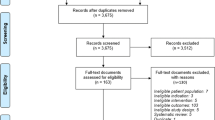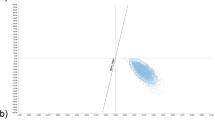Abstract
Background: Nearly the entire population of Japan has been vaccinated with Bacillus Calmette-Guerin (BCG), which causes a false-positive result in the tuberculin skin test (TST). The interferon-γ release assay QuantiFERON®-TB Gold (QFT) is a new alternative to the TST that can be used to screen for latent tuberculosis infection and active tuberculosis, as it has no cross-reactivity with BCG.
Methods: We constructed a Markov model to evaluate the cost effectiveness of the QFT for tuberculosis contact screening. The target population is a hypothetical cohort of 1000 immunocompetent 20-year-old individuals who have had contact with sputum-smear-positive pulmonary tuberculosis patients. The analysis was conducted from a societal perspective over the lifetime of a contact. We compared the QFT-alone strategy with the TST followed by QFT (TST/QFT) strategy and the TST-alone strategy.
Results: In a base-case analysis, the QFT-alone strategy was dominant ($US471.54; 28.1099 quality-adjusted life-years [QALYs]), compared with the TST/QFT strategy ($US500.55; 28.1087 QALYs) and the TST-alone strategy ($US573.98; 28.1079 QALYs). The incremental cost-effectiveness ratio of the QFT-alone strategy was a cost saving of $US23 043.5/QALY gained compared with the TST/QFT strategy. On one-way sensitivity analysis, TST specificity and the prevalence of tuberculosis/latent tuberculosis infection affected the cost effectiveness. The probabilistic analysis showed that the QFT-alone strategy has a 95% chance of being cost effective at a threshold ratio of $US2.10/QALY gained, compared with the TST/QFT strategy.
Conclusion: The QFT-alone strategy is the most cost effective for tuberculosis contact screening in Japan.
















Similar content being viewed by others
References
World Health Organization. Global tuberculosis control: surveilance, planning, financing. WHO Report 2007; WHO/HTM/TB/2007.376 [online]. Available from URL: http://www.who.int/tb/publications/global_report/2007/en/ [Accessed 2008 Apr 22]
Health Labour and Welfare Ministry. Epidemiology of tuberculosis in Japan [in Japanese]. Tokyo: Health Labour and Welfare Ministry, 2007
Macintyre CR, Plant AJ, Hendrie D. The cost-effectiveness of evidence-based guidelines and practice for screening and prevention of tuberculosis. Health Econ 2000; 9(5): 411–21
Diel R, Nienhaus A, Lange C, et al. Cost-optimisation of screening for latent tuberculosis in close contacts. Eur Respir J 2006; 28(1): 35–44
Mori T, Harada N. Cost-effectiveness analysis of QuantiFERON-TB 2nd generation used for detection of tuberculosis infection in contact investigations [in Japanese]. Kekkaku 2005; 80(11): 675–86
The National Tuberculosis Controllers Association and CDC. Guidelines for the investigation of contacts of persons with infectious tuberculosis: recommendations from the National Tuberculosis Controllers Association and CDC. MMWR Recomm Rep 2005 Dec 16; 54 (RR-15): 1-47 [online]. Available from URL: http://www.cdc.gov/mmwr/pdf/rr/rr5415.pdf [Accessed 2008 Apr 22]
Kowada A, Hamada Y, Aoki M. Utility of QuantiFERON TB-2G for tuberculosis contact investigations in public health services [in Japanese]. Nippon Koshu Eisei Zasshi 2007; 54(7): 434–9
Diel R, Zaslavsky AM, Loddenkemper R. Cost-effectiveness of interferon-gamma release assay screening for latent tuberculosis infection treatment in Germany. Chest 2007; 131(5): 1424–34
Diel R, Wrighton-Smith P, Zellweger JP. Cost-effectiveness of interferon-gamma release assay testing for the treatment of latent tuberculosis. Eur Respir J 2007 Aug; 30(2): 321–32
Mazurek GH, Jereb J, Lobue P, et al. Guidelines for using the QuantiFERON-TB Gold test for detecting Mycobacterium tuberculosis infection, United States. MMWR Recomm Rep 2005; 54(RR-15): 49–55
Health Labour and Welfare Ministry. Guidelines for the investigation of contacts of persons with infectious tuberculosis. Tokyo: Health Labour and Welfare Ministry, 2007 [in Japanese; online]. Available from URL: http://www.phcd.jp/shiryo/TB/2007TBsesshokusha_kenshin_tebiki_2han.pdf [Accessed 2008 May 21]
Health Labour and Welfare Ministry. Guidelines for preventing the transmission of mycobacterium tuberculosis in health-care settings [in Japanese]. Tokyo: Health Labour and Welfare Ministry, 1999
Life table in Japan, 2005 [in Japanese; online]. Available from URL: http://www.mhlw.go.jp/toukei/saikin/hw/life/20th/index.html [Accessed 2008 May 21]
Research Institute of Tuberculosis in Japan. Research project for surveillance [in Japanese]. Tokyo: Research Institute of Tuberculosis in Japan, 2006
Jereb J, Etkind SC, Joglar OT, et al. Tuberculosis contact investigations: outcomes in selected areas of the United States, 1999. Int J Tuberc Lung Dis 2003; 7(12 Suppl. 3): S384–90
Tokyo Metropolitan Government. Tuberculosis in Tokyo [in Japanese]. Tokyo: Health and Safety Office Bureau of Welfare and Public Health, 2005
Aziz MA, Wright A, Laszlo A, et al. Epidemiology of antituberculosis drug resistance (the Global Project on Anti-tuberculosis Drug Resistance Surveillance): an updated analysis. Lancet 2006; 368(9553): 2142–54
Tuberculosis Research Committee (Ryoken). Drug-resistant Mycobacterium tuberculosis in Japan: a nationwide survey, 2002. Int J Tuberc Lung Dis 2007 Oct; 11(10): 1129–35
Horsburgh Jr CR. Priorities for the treatment of latent tuberculosis infection in the United States. N Engl J Med 2004; 350(20): 2060–7
Kimura M, Comstock GW, Mori T. Comparison of erythema and induration as results of tuberculin tests. Int J Tuberc Lung Dis 2005; 9(8): 853–7
Yoshiyama T. Cost effectiveness analysis of isoniazid preventive therapy to the contacts of tuberculosis patients under Japanese settings [in Japanese]. Kekkaku 2000; 75(11): 629–41
Yoshiyama T, Ogata H, Wada M. Treatment results of multi drug resistant tuberculosis, a hospital based study [in Japanese]. Kekkaku 2005; 80(11): 687–93
Menzies D, Pai M, Comstock G. Meta-analysis: new tests for the diagnosis of latent tuberculosis infection: areas of uncertainty and recommendations for research. Ann Intern Med 2007; 146(5): 340–54
Mori T, Sakatani M, Yamagishi F, et al. Specific detection of tuberculosis infection: an interferon-gamma-based assay using new antigens. Am J Respir Crit Care Med 2004; 170(1): 59–64
Ito K, Hoshino H, Nakazono T, et al. Liver damage in treatment of latent tuberculous infection by isoniazid [in Japanese]. Kekkaku 2006; 81(11): 651–60
Fountain FF, Tolley E, Chrisman CR, et al. Isoniazid hepatotoxicity associated with treatment of latent tuberculosis infection: a 7-year evaluation from a public health tuberculosis clinic. Chest 2005; 128(1): 116–23
LoBue PA, Moser KS. Use of isoniazid for latent tuberculosis infection in a public health clinic. Am J Respir Crit Care Med 2003; 168(4): 443–7
Miyashita H, Higuchi K, Higashiyama N, et al. Detection of tuberculosis infection using a whole blood interferon gamma assay in a contact investigation: evaluation using quantiFERon TB-2G [in Japanese]. Kekkaku 2005; 80(8): 557–64
Diel R, Nienhaus A, Schaberg T. Cost-effectiveness of isoniazid chemoprevention in close contacts. Eur Respir J 2005; 26(3): 465–73
Moran-Mendoza O, Marion SA, Elwood K, et al. Tuberculin skin test size and risk of tuberculosis development: a large population-based study in contacts. Int J Tuberc Lung Dis 2007; 11(9): 1014–20
Farhat M, Greenaway C, Pai M, et al. False-positive tuberculin skin tests: what is the absolute effect of BCG and non-tuberculous mycobacteria? Int J Tuberc Lung Dis 2006; 10(11): 1192–204
Igakutsushin-sha. Medical insurance reimbursement table in Japan [in Japanese]. Tokyo: Igakutsushin-sha, 2007 [online]. Available from URL: http://igakutushin.co.jp/index1.php?contenturl=page1.php?sid=299 [Accessed 2008 May 21]
Kang YA, Choi YJ, Cho YJ, et al. Cost of treatment for multidrug-resistant tuberculosis in South Korea. Respirology 2006; 11(6): 793–8
Health Labour and Welfare Ministry. Basic survey on wage structure in Japan [in Japanese]. Tokyo: Health, Labour and Welfare Ministry, 2006
Statistics Bureau. Japan statistical yearbook 2007 [in Japanese]. Tokyo: Ministry of Internal Affairs and Communications, 2007
Organisation for Economic Co-operation and Development. Purchasing power parities data. Organisation for Economic Co-operation and Development, 2007 [in Japanese; online]. Available from URL: http://www.oecd.org/dataoecd/61/56/39653523.xls [Accessed 2008 Apr 22]
Weinstein MC, Siegel JE, Gold MR, et al. Recommendations of the Panel on Cost-effectiveness in Health and Medicine. JAMA 1996; 276(15): 1253–8
Arend SM, Thijsen SF, Leyten EM, et al. Comparison of two interferon-gamma assays and tuberculin skin test for tracing tuberculosis contacts. Am J Respir Crit Care Med 2007; 175(6): 618–27
Funayama K, Tsujimoto A, Mori M, et al. Usefulness of QuantiFERON TB-2G in contact investigation of a tuberculosis outbreak in a university [in Japanese]. Kekkaku 2005; 80(7): 527–34
Health Labour and Welfare Ministry. Interferon-gamma release assay as tuberculosis screening test in Japan [in Japanese; online]. Available from URL: http://www.toyama.med.or.jp/kaiin/tuti/kensaryou.pdf [Accessed 2008 May 21]
Research Institute of Tuberculosis in Japan. Tuberculosis reaction surveillance [in Japanese]. Tokyo: Research Institute of Tuberculosis in Japan, 1999
Oxlade O, Schwartzman K, Menzies D. Interferon-gamma release assays and TB screening in high-income countries: a cost-effectiveness analysis. Int J Tuberc Lung Dis 2007; 11(1): 16–26
TB guidelines [in Japanese; online]. Available from URL: http://www.cdc.gov/TB/pubs/mmwr/Maj_guide/cdc_ats_guidelines.htm [Accessed 2008 Apr 23]
Acknowledgments
No sources of funding were used to assist in the preparation of this study. The authors have no conflicts of interest that are directly relevant to the content of this study.
The authors wish to thank Dr Joshua Levi Jacobs, MD, for his editorial help.
Author information
Authors and Affiliations
Corresponding author
Rights and permissions
About this article
Cite this article
Kowada, A., Takahashi, O., Shimbo, T. et al. Cost Effectiveness of Interferon-γ Release Assay for Tuberculosis Contact Screening in Japan. Mol Diag Ther 12, 235–251 (2008). https://doi.org/10.1007/BF03256289
Published:
Issue Date:
DOI: https://doi.org/10.1007/BF03256289




